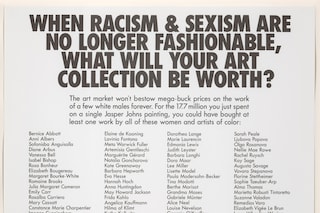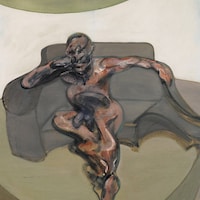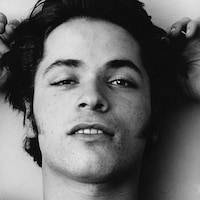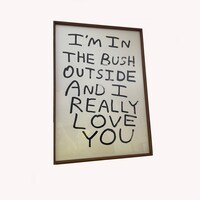Art historian and curator Aindrea Emelife’s upcoming book surveys eight decades of the most potent and defiant artworks
As the right to protest in the UK continues to be imperilled, Aindrea Emelife’s upcoming book A Brief History of Protest Art [published by Tate Publishing] reminds us of the art’s potential to influence, condemn, elevate, inspire, and rally against the status quo. Beginning with Picasso’s Guernica, the independent curator and art historian embarks on a visual journey across eight decades of artists’ responses to the most vital political and social realities of their day. From global conflicts, inequality, the Aids epidemic, LGBTQ+ rights, the Black Lives Matter movement and the climate crisis, Emelife explores the work of over 50 artists whose art has spoken up for powerless minorities while speaking out against incursions into our human rights.
While works of art often comment on societal discontent in explicit ways – such as Barbara Kruger’s direct and provocative observations on consumer culture and constructed expectations of gender – they can also create resistance in more oblique ways. Emelife considers some of the utopic artworks – including Yayoi Kusama’s visions – that transmit a message of hope by inviting us to re-connect with a vision of what the world could be.
A fundamental dimension of A Brief History of Protest Art is the grassroots movements, collectives, and anonymous artworks that form what Emelife describes “the very language of protest”. The book surveys posters, murals, and art on the street – works that transcend the designated gallery space and act as a call to arms. She tells Dazed, “Art really grasps its power when it becomes part of the public debate, rather than just a form of decoration.”
Take a look through the gallery above for a glimpse of some of the artworks featured in A Brief History of Protest Art. Below, we talk to Aindrea Emelife about the potency of art, to protect our civil liberties, start a revolution, and, ultimately, to change the world.
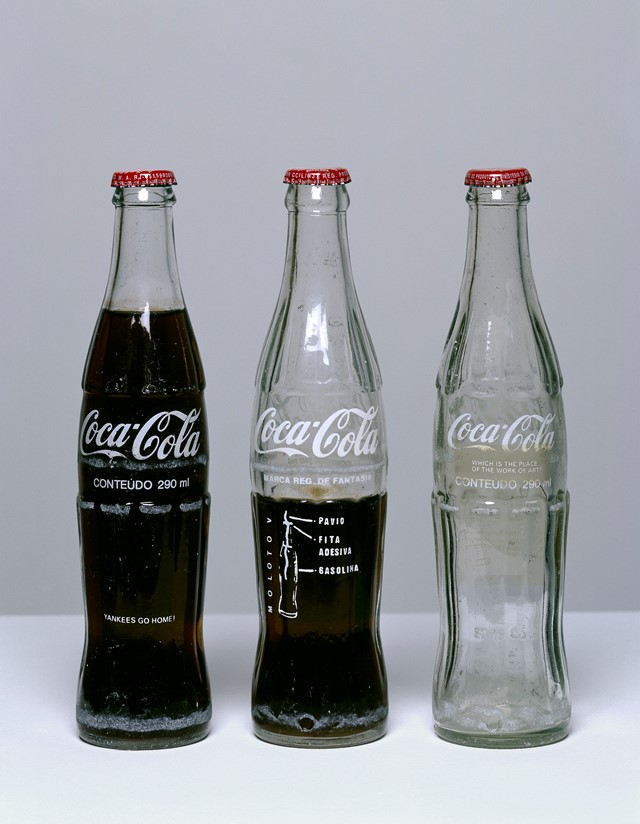
Please could you highlight some of your personal favourites among the 50 or more artists who feature in this book?
Aindrea Emelife: When I began researching and formulating the book, it was instantly important to me that I include not only the great fine artists of our time, and artworks that have formed the fabric of political and protest art as we know it – Picasso’s Guernica, Guerilla Girls, Ai Wei Wei, and Barbara Kruger for example, but also to include and focus on grassroots movements and activism, unattributed ‘anonymous’ works and collective practice.
Artworks such as these are in the very language of protest – by the people, for the people in democratic mediums such as posters, murals, and art on the street. It speaks to the moment of now, as so much protest art has occurred in the past few years, as we reach a potent moment of socio-political change, and it is, I am sure, unsurprising that because of this, a great deal of the work featured is from recent times.
In what ways have you experienced art most profoundly acting as a call to arms?
Aindrea Emelife: Art outside of the museum space does something special. It’s a sentiment that I keep close whenever I’m curating an exhibition – how can I evoke the feeling of community in a space? Because really that’s when it comes alive – when people feel part of it. Art really grasps its power when it becomes part of the public debate, rather than just a form of decoration. Art breathes and lives when it reaches the masses. People say art is an ivory tower, but when it leaves that tower, it is a conquering army. Once unleashed by the shackles of perceived good taste, art can make people into action, to new ways of thinking, it can inspire a society that is diverse, inspiring, collaborative and good – it can start a revolution of the mind. Isn’t that what art was supposed to do anyway?
“People say art is an ivory tower, but when it leaves that tower, it is a conquering army” – Aindrea Emelife
You have written about the potential of art to be utopic, creating visions of worlds that could exist. Could you elaborate on this idea and how this functions as a powerful way of shaping our ideals and hopes?
Aindrea Emelife: I’m utopic in general in that I believe art and visual culture can change the world. It can help us understand our own subjectivity and transport us to other worlds, histories, and viewpoints to better understand the world we live in now. Art is the emotional memory of the world – it records the emotional reality of particular moments. This is valuable for progression and for hope.
How would you respond to Picasso’s quote: ‘Art is a lie that makes us realise truth’? Please could you elaborate on what this idea means to you in terms of protest and social change?
Aindrea Emelife: I think a great example of this is Picasso’s ’Guernica‘. It is an invention, but a great statement about the horrors of war. It teaches us about the human condition in a way that is not reportage, or document – the imagery is not factual. Yet even in its illusion, it hits harder to the truth in some ways.
Fiction can be revealing – it is powerful to learn about the condition in this way. Some of the best protest art sets an example by imagining a better future. Or by allegory. It hits you when you least expect and so are unarmed to disengage its power with apathy.
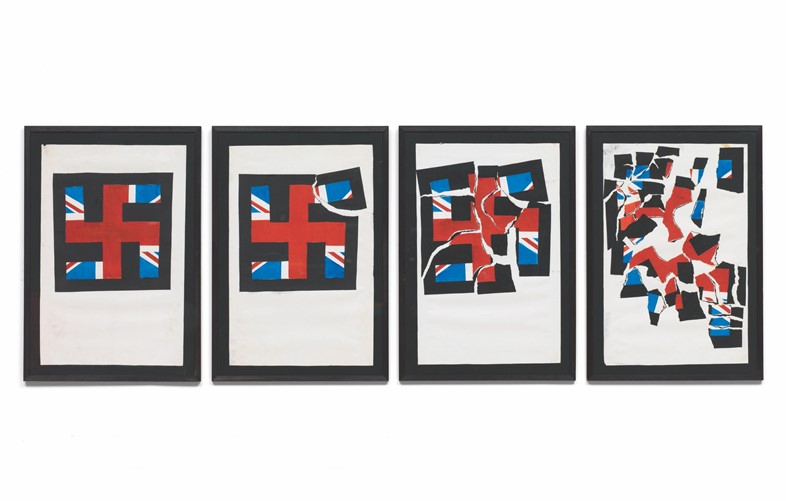
With the very act of protest under threat, in what ways is art an even more vital form of resistance?
Aindrea Emelife: Civil liberties must be protected. The new bill is concerning as it equips the state with enormous authoritarian power using extremely vague language that can be twisted for any purpose. Protest is a human right. As someone who champions the collective power of art to enact change, it follows too that the power of people to voice this change must be championed. Art cannot be silenced. It is vital for imagining and inspiring a new world. It is fuel for this long-overdue revolution of the mind, of culture, of history, and the current renegotiations about what is valuable to us, after these years of reckoning. It is vital as a catalyst but also an enduring reminder that we have a long way to go.
Protest art complicates rather than simplifies. It should usher us forward to the unseen and the unknown, or it should address the known, and urge us to question this reality, so that alternative understandings of the world and the way we live may occur. In shaking up our reality and reinterpreting the world anew, the artist reveals existing power relations within society, determining what is worthy of recalibrating.
Can artists still function as society’s truth-sayers despite the demands of the art market and commercial collaborations etc?
Aindrea Emelife: Commerciality can be used to transmit a message in unexpected ways. But it is difficult. There’s interesting potential to this but the core component of community must be upheld. Engaged art collectors do not shy away from political or protest art, and it is exciting to see landmark exhibitions of so many of these trailblazers in our institutions, as this means their art leaves the privacy of art storage or collectors homes and is accessible to more people.
For me, the best art is challenging – not just in content. It should challenge us in many ways, attacking our views of art, the world, culture, what is possible, what is not… The art market seems to be celebrating this. Commercial galleries are putting on museum-level shows and expanding their programmes. This must keep going.
“Protest art complicates rather than simplifies” – Aindrea Emelife
In what ways does the idea of protest inform your own work as a curator and art historian?
Aindrea Emelife: One of my greatest fears is living a self-centric life. I must make my work and my thoughts mean something. I want to move people into self-interrogation, joy, and learning. I want to be part of building a better world and creating something to influence generations to come. It is urgent for those of us who care about this to consider new ways of art having a living value.
What remains a through-line in each and every project I undertake is that I want there to be a greater purpose; may that be as simple as providing joy or helping in the field of equity or amplifying voices and perspectives. My metric for success is having an impact on something greater than myself.
Working on this book has confirmed this – we all have the power to bring something new to the discussion in our own ways. I am passionate about uncovering untold stories and championing the unseen and unheard in the exhibitions I curate and in my writing, as well as challenging how we’ve looked at history and the world, and opening that up in new, exciting ways. For example, my upcoming show, Black Venus at Fotografiska New York, is a survey of Black woman photographers, and seeks to expand on the history of the Black women in visual culture, from Hottentot Venus to now, exploring the legacy of how Black women have been seen historically – racialised, exoticised, fetishised – and how, in reclaiming agency over the image, Black women artists expand on this legacy, and present a rich, layered narrative of Black womanhood that has long since been overlooked…This is just the tip of the iceberg.
A Brief History of Protest Art by Aindrea Emelife is published by Tate Publishing and is available from March 3 2022. Follow Emelife and Reference Point updates on an upcoming protest art symposium
![Peter Kennard, “
Protest and Survive” [1980]](https://images-prod.dazeddigital.com/480/azure/dazed-prod/1320/0/1320217.jpg)
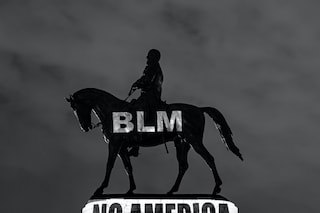
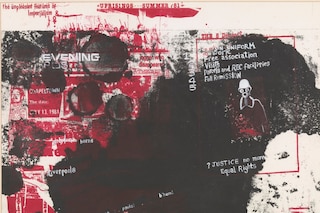
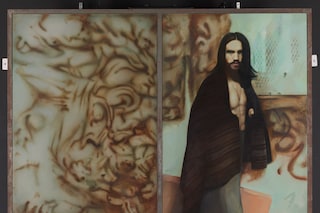

![Mark Wallinger, “
State Britain” [2007]](https://images-prod.dazeddigital.com/320/0-0-3000-2000/azure/dazed-prod/1320/0/1320219.jpg)
